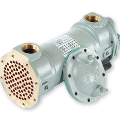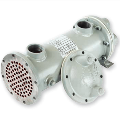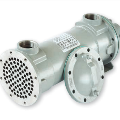Heat exchanger parts play a essential role in keeping green thermal switch throughout diverse industries. Whether utilized in residential heating structures, business cooling programs, or renewable power solutions, those additives make certain top-quality warmness change. Brazed plate heat exchangers, recognized for their compact layout and excessive efficiency, rely on satisfactory elements to deliver advanced performance. Understanding those essential components allows in choosing the right exchanger for particular needs.
Plates and Their Function in Heat Exchangers

Plates are the center additives of brazed plate warmth exchangers. These skinny metal sheets, normally made from stainless-steel or different corrosion-resistant materials, create more than one channels for fluid drift. Their precise layout maximizes floor vicinity, ensuring green warmth transfer between fluids. The pattern and thickness of the plates without delay have an impact on thermal overall performance, strain drop, and typical sturdiness.
Gaskets and Sealing Efficiency
Although brazed plate heat exchangers do not use conventional gaskets, different forms of exchangers rely on them for sealing. Gaskets save you fluid leakage and hold separation between hot and bloodless streams. Made from rubber or artificial compounds, they need to resist temperature fluctuations and chemical exposure. Proper maintenance guarantees long-term efficiency and decreases the hazard of leaks.
The Role of Brazing Material in Heat Exchangers
Brazing material, typically copper or nickel, binds the plates collectively in brazed plate warmth exchangers. This bonding technique gets rid of the need for gaskets, growing a robust, leak-evidence connection. The choice of brazing material affects corrosion resistance and heat switch performance, making it essential to pick the proper composition primarily based on software requirements.
Heat Transfer Fluids and Their Impact
The kind of warmness switch fluid used in heat exchangers significantly affects performance. Common fluids consist of water, glycol mixtures, and refrigerants. Their thermal conductivity, viscosity, and chemical stability determine how efficiently heat is transferred. Regular tracking and proper fluid choice amplify the lifespan of the warmth exchanger whilst keeping ultimate performance.
Distribution Areas in Heat Exchangers
Distribution regions make sure even fluid waft across the warmth exchanger plates. These sections are designed to prevent uneven distribution, which could lead to inefficiencies and localized overheating or cooling. Well-designed distribution regions enhance thermal transfer via optimizing fluid movement within the exchanger.

Pressure and Temperature Control Mechanisms
Heat exchanger parts consisting of strain and temperature manage valves help maintain strong working conditions. These components alter fluid float, stopping excessive pressure buildup or temperature fluctuations. Proper calibration and routine inspections are essential to keep away from capability device failures or decreased efficiency.
Expansion Tanks and Their Role in Heat Exchange Systems
Expansion tanks accommodate the thermal growth of fluids inside a heat exchanger machine. Without these tanks, stress degrees can rise dangerously, main to leaks or harm. Expansion tanks assist preserve device balance, prolonging the lifespan of brazed plate warmness exchangers and other forms of exchangers.
Corrosion Prevention in Heat Exchanger Components
Corrosion is a primary difficulty in heat exchangers, affecting performance and durability. Proper fabric choice, protective coatings, and chemical treatments lessen corrosion dangers. Regular maintenance and monitoring of warmth exchanger parts can prevent premature screw ups and luxurious replacements.
Cleaning and Maintenance for Optimal Performance
Regular cleansing and maintenance of heat exchanger components prevent fouling, scaling, and blockages. Deposits from tough water, chemical compounds, or contaminants lessen warmth transfer efficiency. Implementing a scheduled cleansing system improves gadget overall performance, lowers electricity intake, and extends equipment life.
Efficiency Improvements with Advanced Designs
Innovations in brazed plate warmness exchangers have caused stepped forward efficiency, compact designs, and stronger heat transfer abilities. Advanced plate styles, optimized waft distribution, and better brazing techniques contribute to greater powerful thermal management. Selecting the present day layout improvements guarantees superior overall performance in numerous programs.

Selecting the Right Heat Exchanger Parts
Choosing the right warmness exchanger components depends on elements together with running temperature, stress requirements, and fluid compatibility. High-satisfactory substances, proper sizing, and everyday protection make sure lengthy-lasting performance. Understanding those components enables in making informed selections for commercial and business heating and cooling solutions.
Conclusion
Heat exchanger parts are fundamental to the efficiency and toughness of thermal switch systems. From the plates and brazing fabric to pressure control mechanisms, every element plays a critical role. Brazed plate heat exchangers, with their compact and green design, are broadly used across numerous industries. Regular maintenance, proper fabric choice, and corrosion prevention techniques make sure those systems operate at top overall performance. Investing in exquisite elements complements electricity efficiency, reduces operational prices, and extends the lifespan of warmth exchangers.


